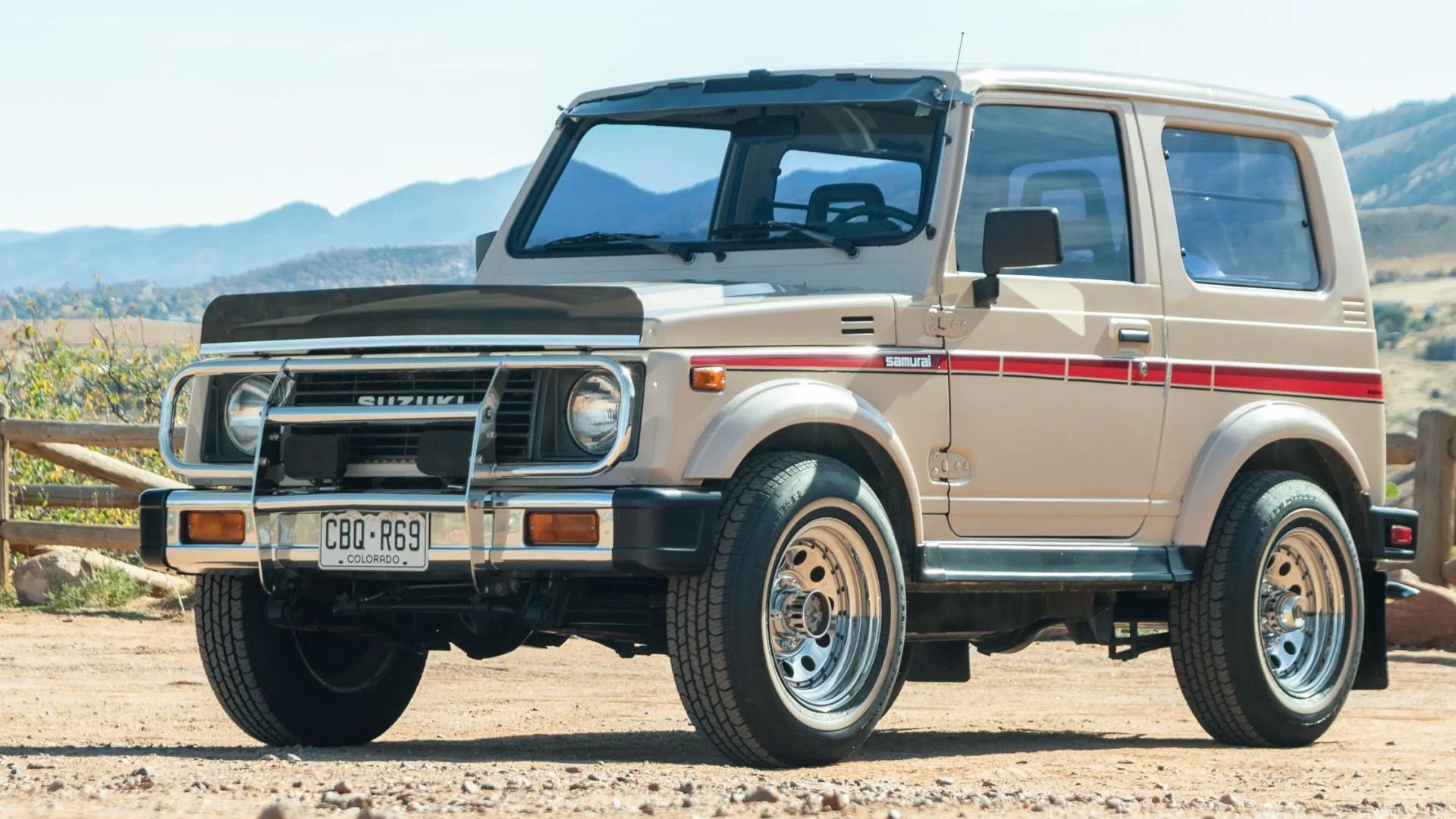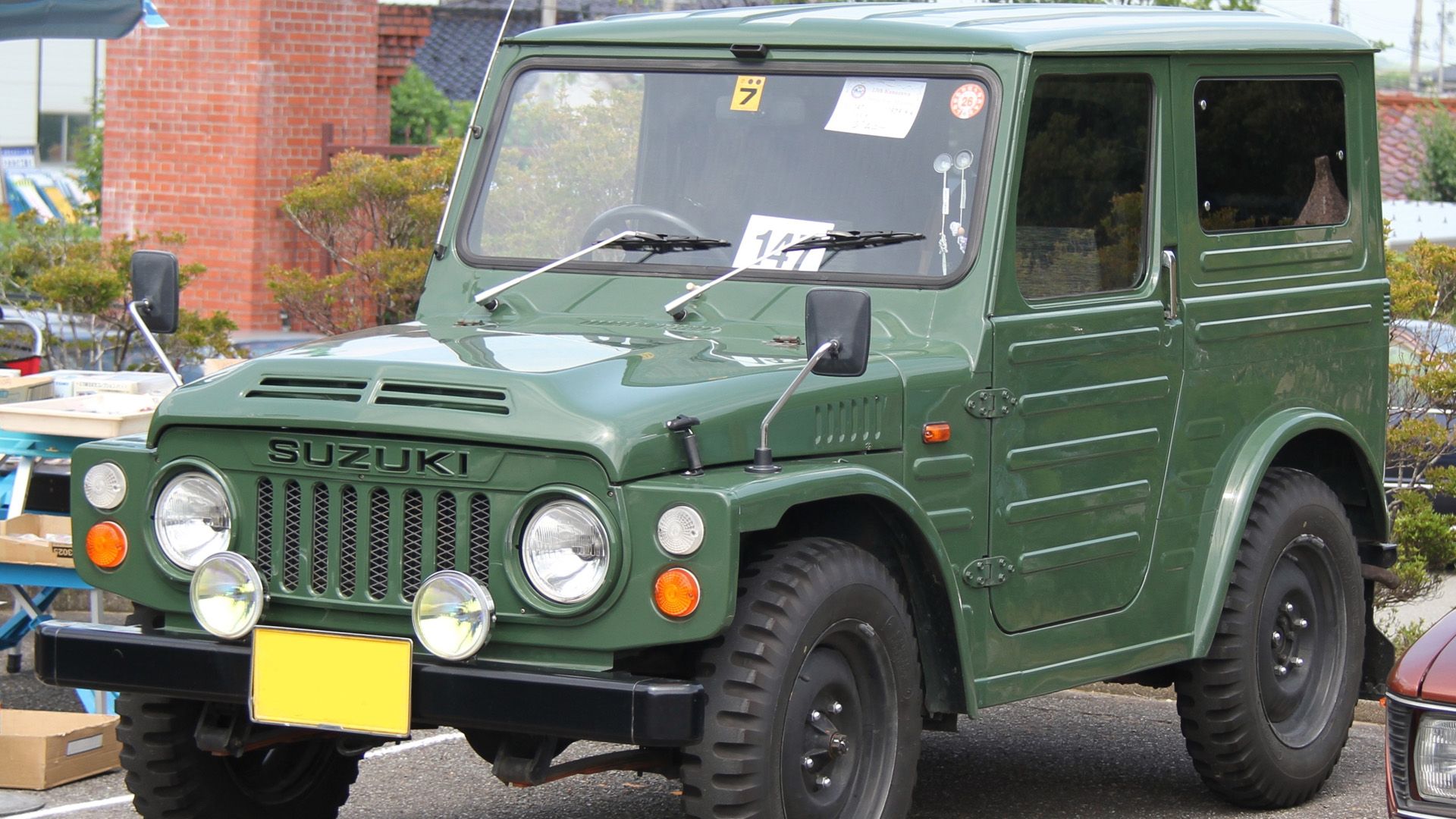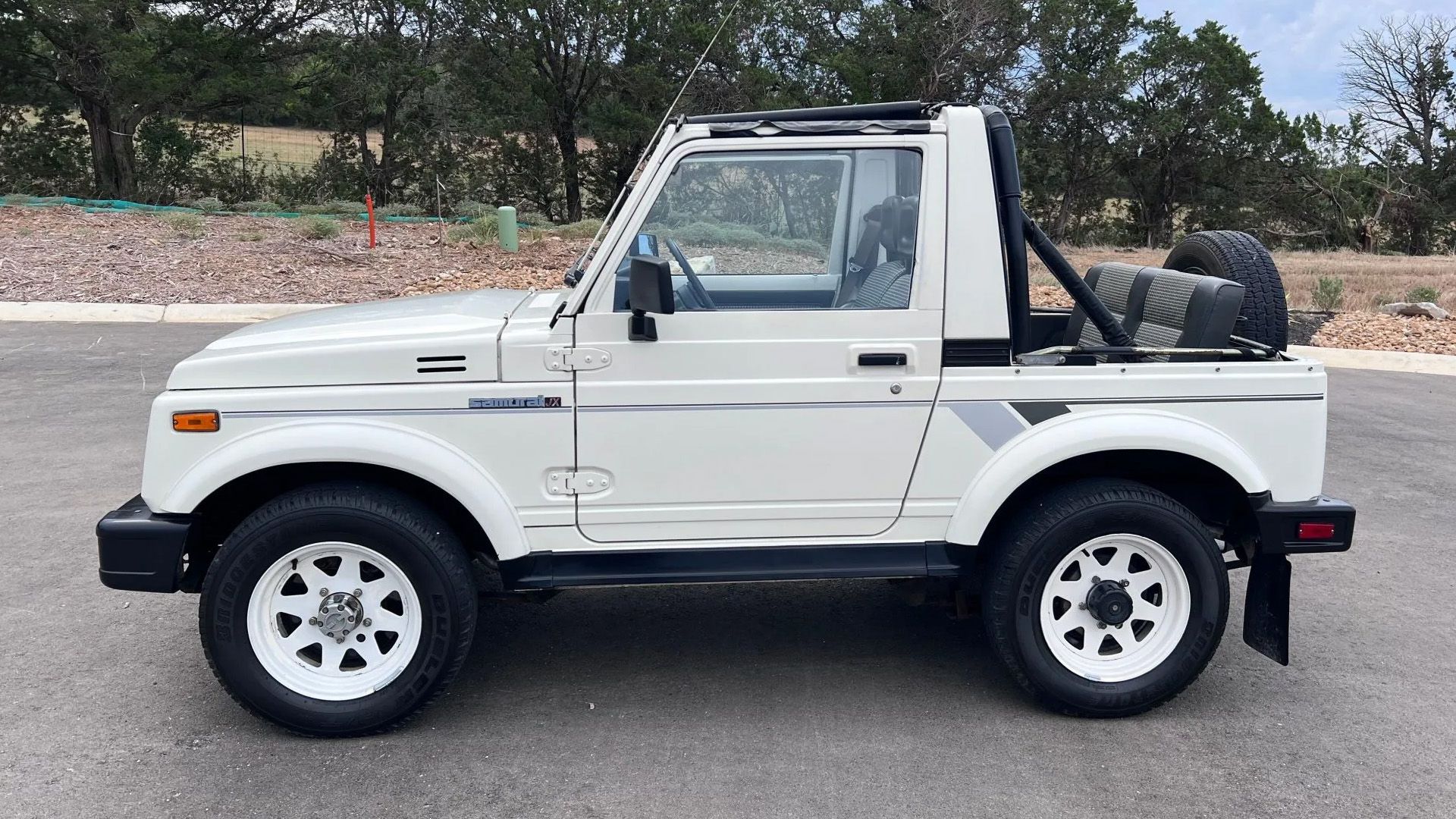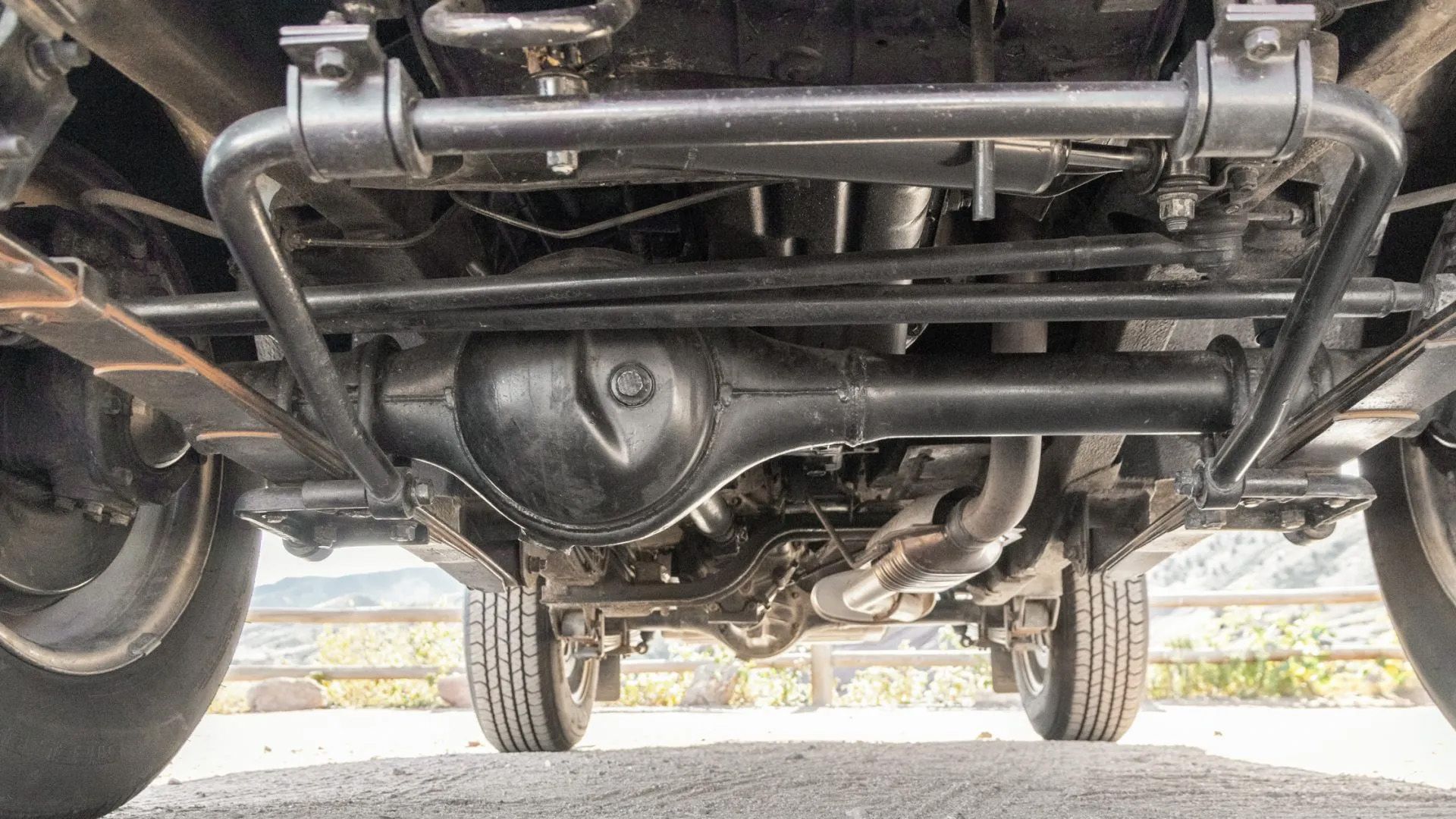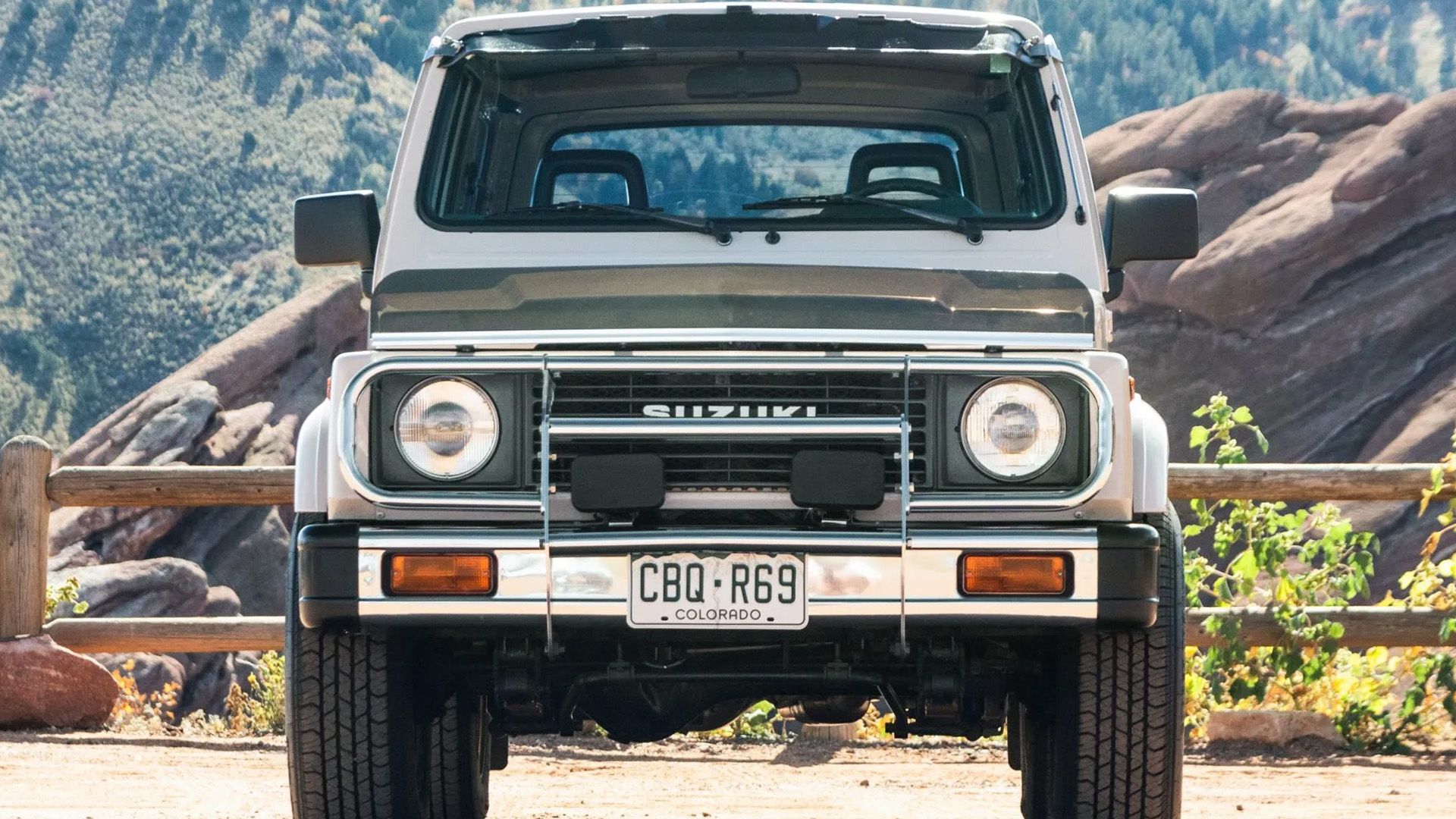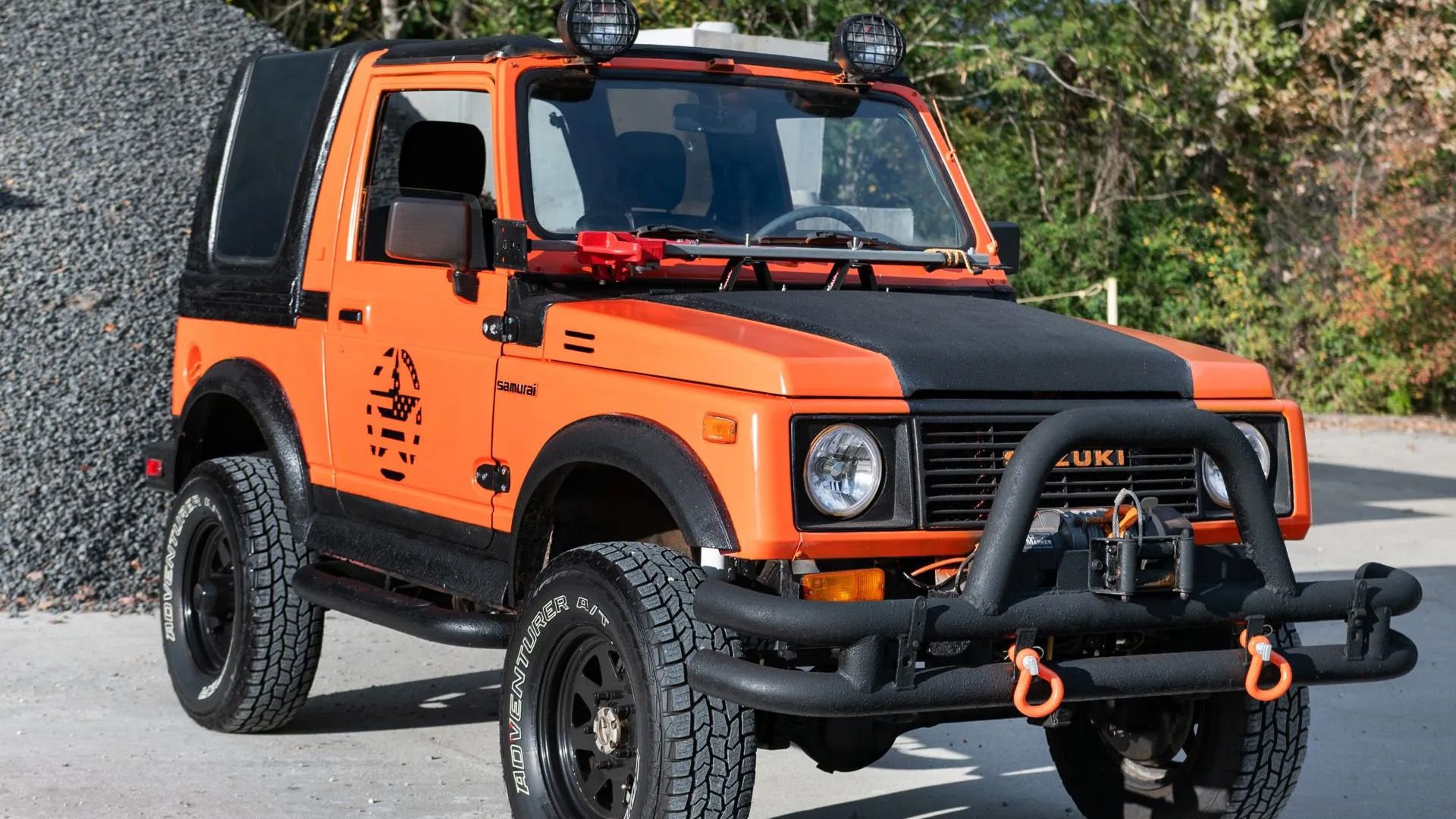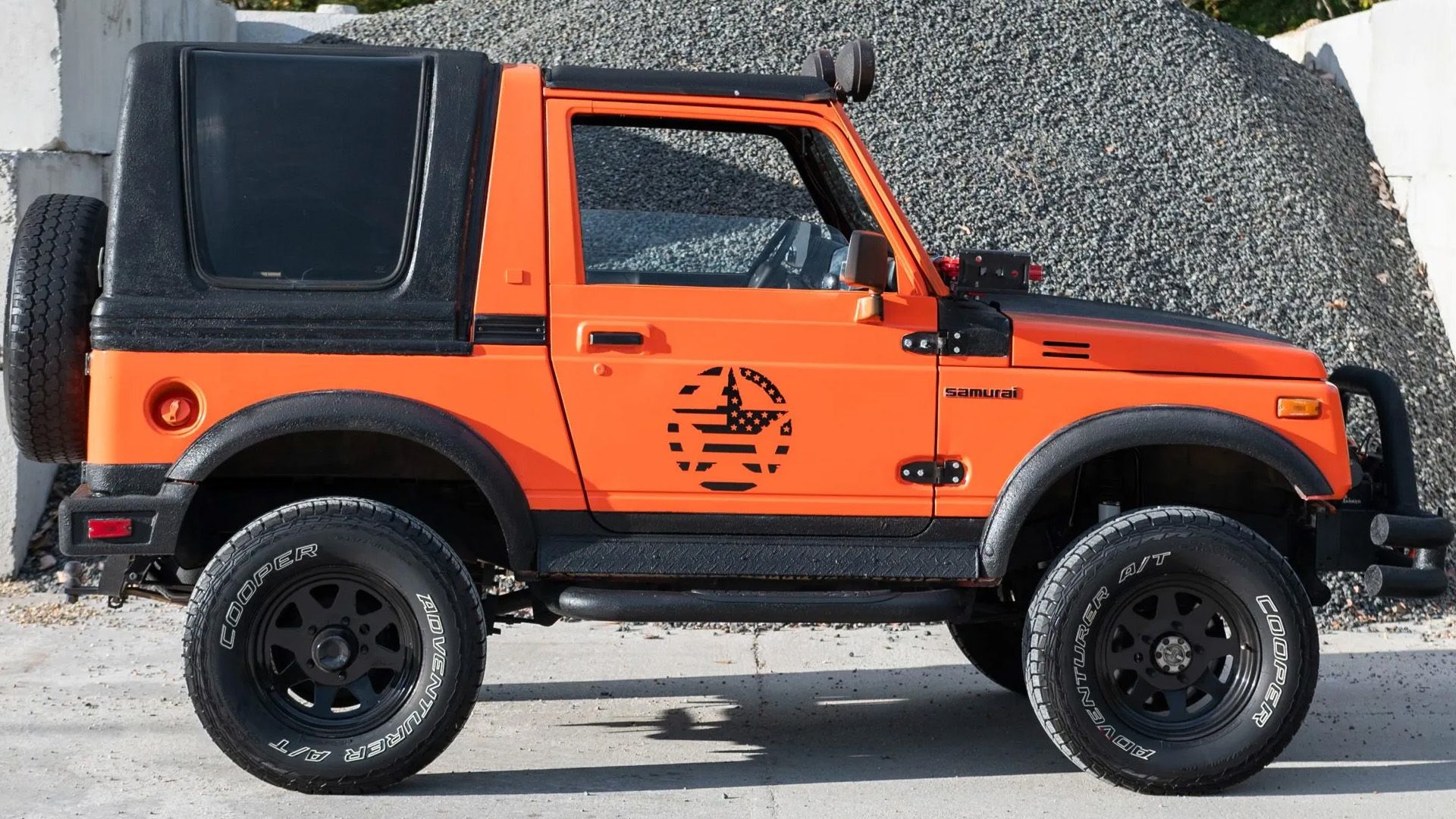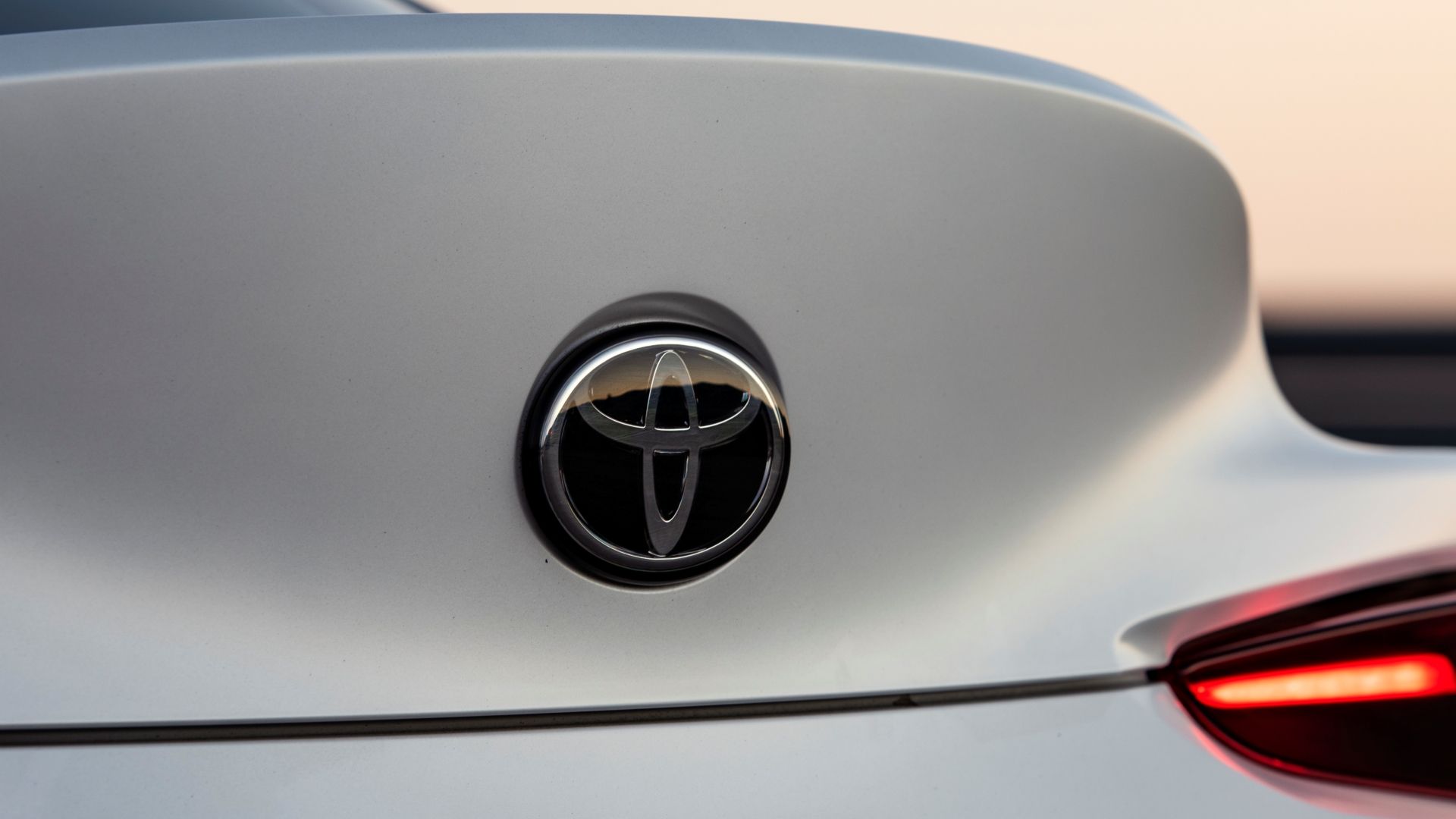The Suzuki Samurai, known internationally as the Jimny, is a compact 4×4 that left a large impression across the automotive world. This pint-sized adventurer may have carried different badges in various markets, but its rugged spirit and off-road utility have remained consistent throughout its history.
This little rig has been big business for Suzuki, so it is worth telling the tale of its origins, features, and legacy.
First-Gen Jimny
Before the Samurai made its mark in the United States, it originated from the legendary Jimny lineage. The first-generation Jimny – introduced in 1970 and initially designated as the LJ10 – utilized solid axles, four-wheel drive with a leaf-sprung suspension, and ladder-on-frame construction. Suzuki had invested ten years of study to develop this Kei-class four-wheel-drive vehicle and it became a hit, selling 5,000 units domestically in its first manufacturing year. The Samurai also was the first mass-produced 4×4 Kei car in the Japanese market, outselling the Mitsubishi Jeep.
The Kei car, by definition, is a Japanese term for the light automobile classification that restricts vehicle dimensions and engine specifications. Kei-class vehicles are legal on the expressway in Japan and owners benefit from lower taxes and insurance rates.
The Jimny became a staple in Suzuki’s vehicle portfolio and has sold more than three million units globally. There have been several iterations of the first-generation Jimny, beginning with the LJ10. That was followed by the LJ20 in 1972, and ending with the SJ20/LJ80, which discontinued in 1981 to make way for the second-generation Jimny SJ30. Throughout the first-gen’s span, there were slight cosmetic overhauls, engine upgrades, drivetrain enhancements, and a few vehicle configuration revamps. These varied between the domestic version and export models.
Suzuki Jimny Generations Over The Years
Depending on the market, the production of different Jimny generations often overlapped. For instance, Brazil continued manufacturing the third-gen model until 2022, even though the fourth-gen version was introduced in 2018.
|
Year Range |
Model Designations |
Generation |
|---|---|---|
|
1970-1981 |
(LJ10/LJ20/SJ10/SJ20) |
First Generation |
|
1981-1998 |
(SJ30/SJ40/JA/JB) |
Second Generation |
|
1995-1998 |
(JA12/JA22/JB32) |
Second Generation |
|
1998-2022 |
(JB23/JB33/JB43/JB53) |
Third Generation |
|
2018-present |
(JB64W/JB74W) |
Fourth Generation |
The First Suzuki Samurai In America
With its compact dimensions and robust build, the Jimny quickly gained popularity as a capable off-roader in global markets. America first saw the Suzuki LJ20 Jimny being imported by a US company called International Equipment Company, laying the groundwork for what would become the Suzuki Samurai 4×4.
In 1985, the Samurai (Suzuki SJ410) debuted on American soil, marking Suzuki’s entry into the U.S. automotive market. Priced competitively at only $6,200, or fully loaded for $7,500, and equipped with a sturdy 4×4 system, the Samurai captured the hearts of adventure seekers and off-road enthusiasts alike. Its introduction brought forth a new era of affordable and accessible off-road vehicles, challenging established players like the Jeep Wrangler.
Suzuki harvested a sizable chunk of market share from its American 4×4 rival, selling 47,000 units in its first calendar year. In 1987, the Samurai did even better, selling over 8,000 vehicles a month and outselling the Wrangler by two to one.
Why Was It So Good?
The appeal of the Suzuki Samurai extended beyond its affordable price tag. Its rugged construction and nimble size made it a versatile companion on and off the road. Owners could customize their Samurai with a healthy menu of aftermarket accessories, enhancing both its aesthetic appeal and off-road capabilities. The distinctive styling of the Samurai 4×4 was on point for the 1980s, further cementing its status as a cult classic among automotive enthusiasts.
Changes Through The Years
Later on, Suzuki was able to re-tune the Samurai for the American market and returned with an improved 1988.5 model. This update offered increased power, a softer suspension, better interior ergonomics, and a sturdier anti-roll bar.
Just like its Jimny LJ predecessor, the Suzuki Samurai underwent several changes through the years. These updates ranged from minor cosmetic enhancements to improvements in engine performance and drivetrain technology. Despite its relatively short lifespan in the American market (the Samurai was discontinued here after 1995), the SUV continued to evolve to meet the demands of its loyal fan base.

Related
787 Suzuki Jimnys Just Set A New Guinness World Record
But not the record you’re thinking…
Suzuki Samurai SJ410 Specifications
|
Engine |
1.3-liter SOHC I4 |
|
Horsepower |
63 – 68 hp |
|
Torque |
76 lb-ft |
|
Gearbox |
5-speed manual transmission |
|
Drivetrain |
Rear- or 4-wheel |
|
Suspension |
Leaf springs; solid axles; dependent |
|
Brakes |
Front discs/rear drums |
|
Curb weight |
2,059 pounds |
|
Wheelbase |
79.9 inches |
|
Length |
135 inches |
|
Width |
60.6 inches |
|
Height |
64.4 inches |
|
Gas mileage |
23/27/25 mpg city/highway/combined |
Comparison To Other 4x4s Of The Period
During its heyday in the late 1980s, the Samurai faced stiff competition from other compact 4x4s like the Jeep Wrangler and the Toyota Land Cruiser. While each vehicle had its strengths, the Samurai stood out for its affordability and agility, making it a popular choice among budget-conscious buyers and urban adventurers.
Off-road enthusiasts, in particular, valued the vehicle for its admirable off-road performance and reliability compared to other 4WDs of the era. The transfer case with switchable low-range 4WD, along with its compact size, made it more agile than other rugged SUVs like the Wrangler and full-size options like the Blazer and Bronco.
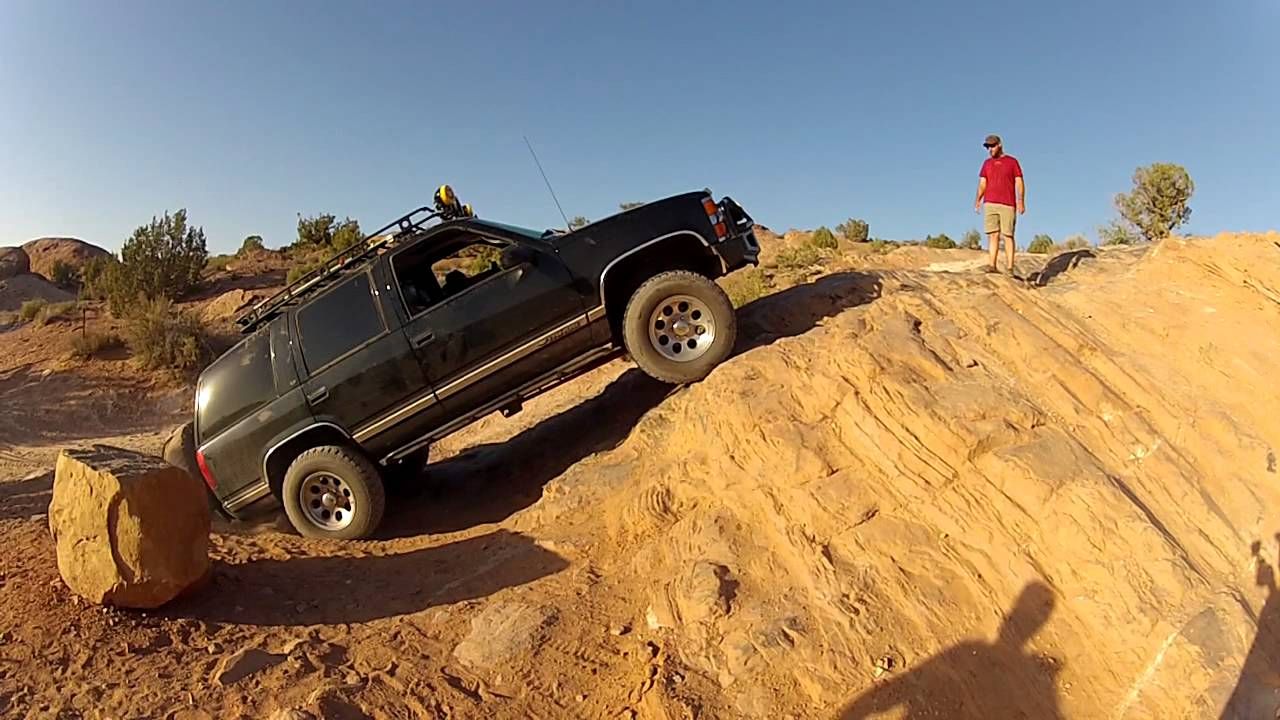
Related
Awesome SUVs Based On Trucks You Can Still Buy Today
For when you need to transport people, go off-road, and pull big things.
Suzuki Samurai Rollover Controversy And Demise
In 1988, the Suzuki Samurai faced a significant setback when Consumers Union (CR) – known today as Consumer Reports (CU) – published a controversial article alleging that the vehicle was prone to rollovers. Despite Suzuki’s efforts to refute these claims, the negative publicity took a toll on the Samurai’s reputation and sales figures. In 1996, Suzuki filed a product disparagement lawsuit against CU, based on the allegations made against the Samurai. Later, Suzuki and CU agreed to dismiss this lawsuit.
The Samurai continued to flounder but faced even more challenges into the mid-1990s. Stringent safety standards were regulated, requiring rear shoulder safety belts to become mandatory. Instead of reworking the partial roll cage and implementing a shoulder harness mounting provision, Suzuki opted to remove the rear seats from the US model altogether.
This move further negatively impacted vehicle sales, combined with mounting legal challenges. After 1995, Suzuki pulled the Samurai from the American market.
What Replaced the Suzuki Samurai?
During the CU crisis, Suzuki, at the time, was already engaged with a new vehicle launch in the US and Canadian market with its Suzuki Sidekick SUV. Known as the Suzuki Escudo in the Japanese domestic market, the Sidekick debuted in the US in 1989 and continued for several years after the Samurai was discontinued, giving Suzuki a continued presence in the small, rugged SUV segment.
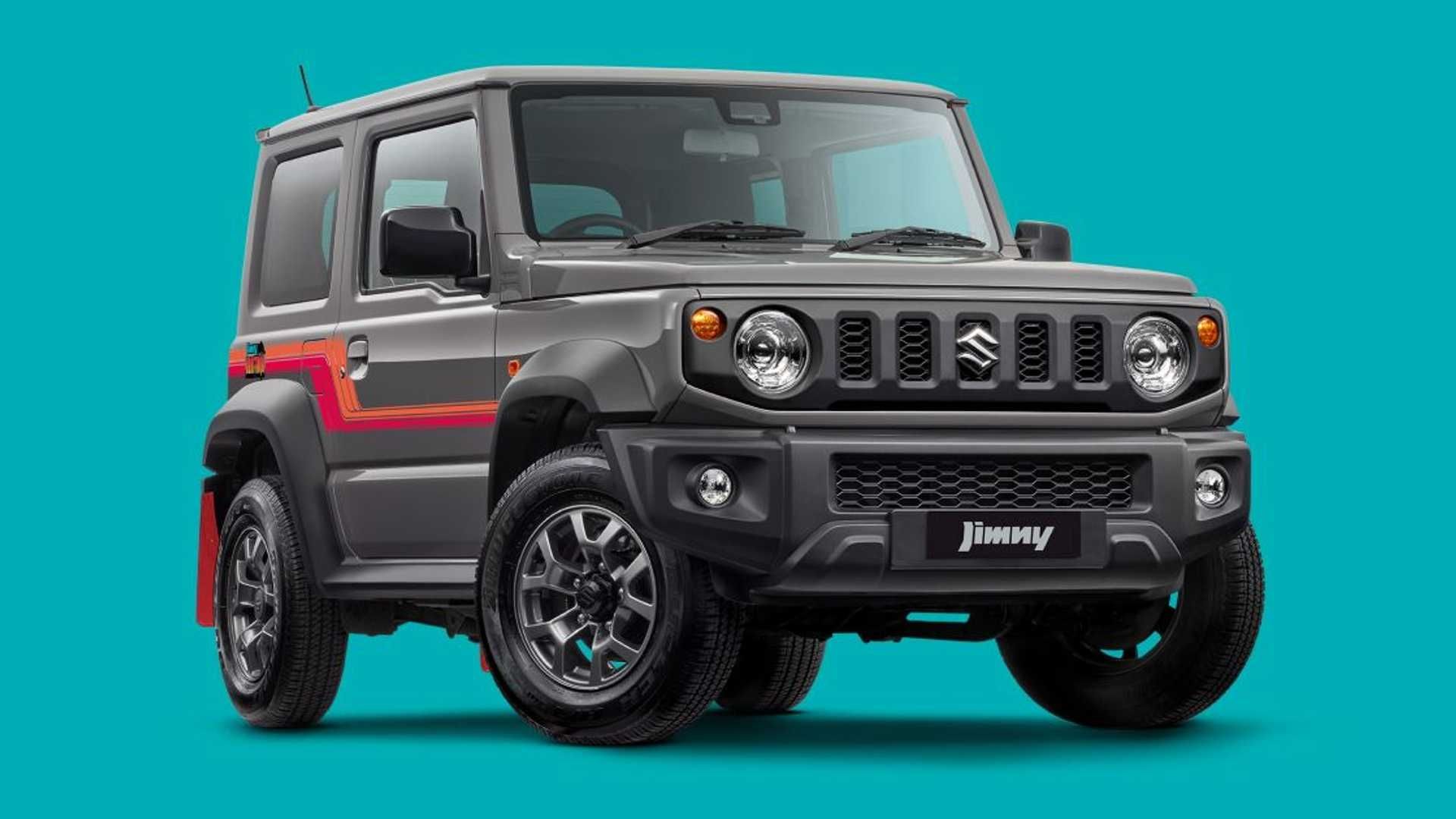
Related
Suzuki Is Taunting America With This New Retro Jimny
A few decals and mudflaps and now we want it even more.
Additionally, the Jimny continued to be available for global markets. In 1998, the third generation came to fruition with the JB23/JB33/JB43/JB53 variants. Ten years later, in 2018, Suzuki commenced production of the fourth-generation Jimny.
Suzuki Samurai Buying Tips
From 1986 through 1995, more than 200,000 Samurai cars were sold in the United States. Unfortunately for a collector in today’s marketplace, trying to find a decent condition thirty-something-year-old off-roader might just be rarer than meeting a real Samurai warrior. The vehicle itself, marketed as a low-priced four-wheel-drive SUV, was used and mostly abused as intended, which left its markings.
Are Old Suzuki Samurais Reliable?
The Suzuki Samurai car was reliable back then, and it can be kept going for a long time with enough maintenance. When shopping for a Samurai 4×4, it’s essential to consider factors such as overall condition, maintenance history, and any potential modifications. Prices for well-maintained examples vary depending on factors such as mileage, rarity, and geographic location. Conduct thorough research and inspections to ensure you find the best Samurai car for your needs.
Most Samurai SUVs being offered up for sale will be highly accessorized or modified, which may not be ideal. Logically, a vehicle with existing modifications could save some expenses, but in typical scenarios, collectors are looking for mint and unmolested specimens. Either way, an inspection should be completed to verify quality parts and correct installation.
Anything bolted on could be removed and cleaned up, but finding appropriate accessories in new condition will be more difficult. It is also important to consider the roll-over implications. The short wheelbase, narrow track-width vehicle was already a roll-over risk in certain driving conditions. A lifted Suzuki Samurai with oversize tires may pose significantly more risk.
The Suzuki Jimny Lives On
While the Samurai may have exited the American market, its spiritual successor, the Suzuki Jimny, continues to thrive globally, and an electrified model is expected. Now constructed with improved power, modern amenities, enhanced safety features, and even better 4×4 capabilities, the latest iterations of the Jimny carry on the legacy of their rugged predecessors. Whether conquering tough off-road terrain or navigating city streets, the Jimny remains a beloved icon in the realm of compact 4x4s.
The Suzuki Samurai may have been small in stature, but its impact on the automotive industry looms large. From its humble beginnings as the Jimny to its role as a trailblazer in the American off-road scene, the Samurai car embodies the spirit of adventure and exploration. For now, reminisce about its legacy, and look forward to the future. Perhaps a new compact 4×4, or better yet, a Jimny, will roll onto US dealership lots in the near future.

